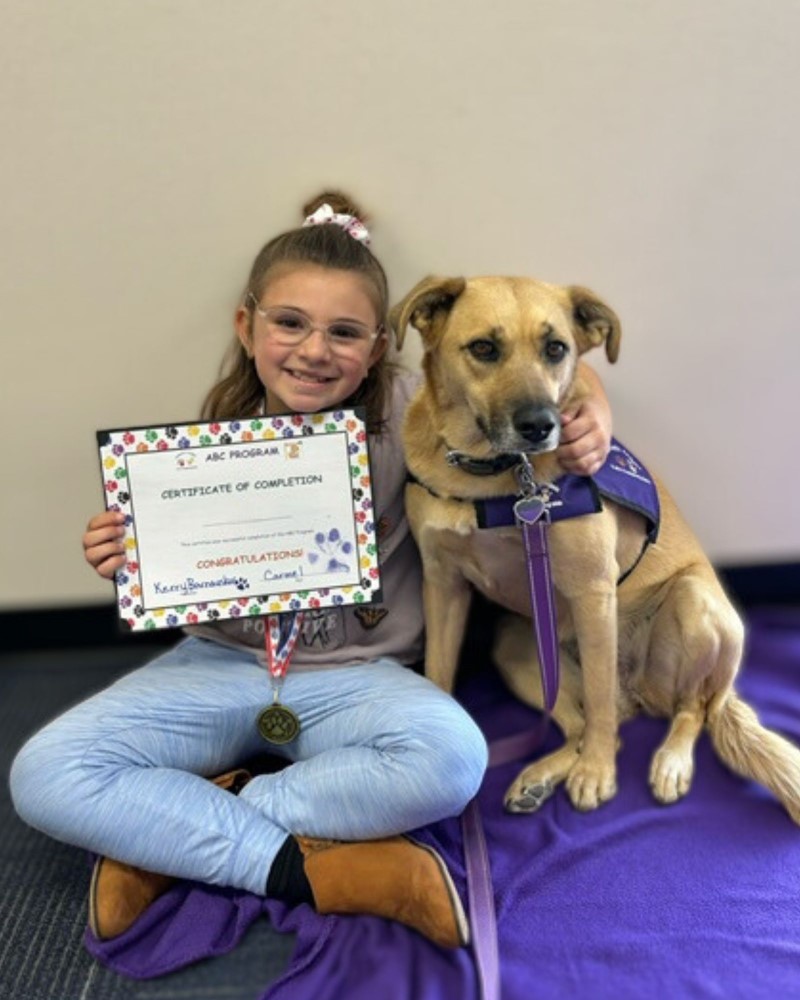Children and Dogs: Six Tips for Success
Children and Dogs: Six Tips for Success
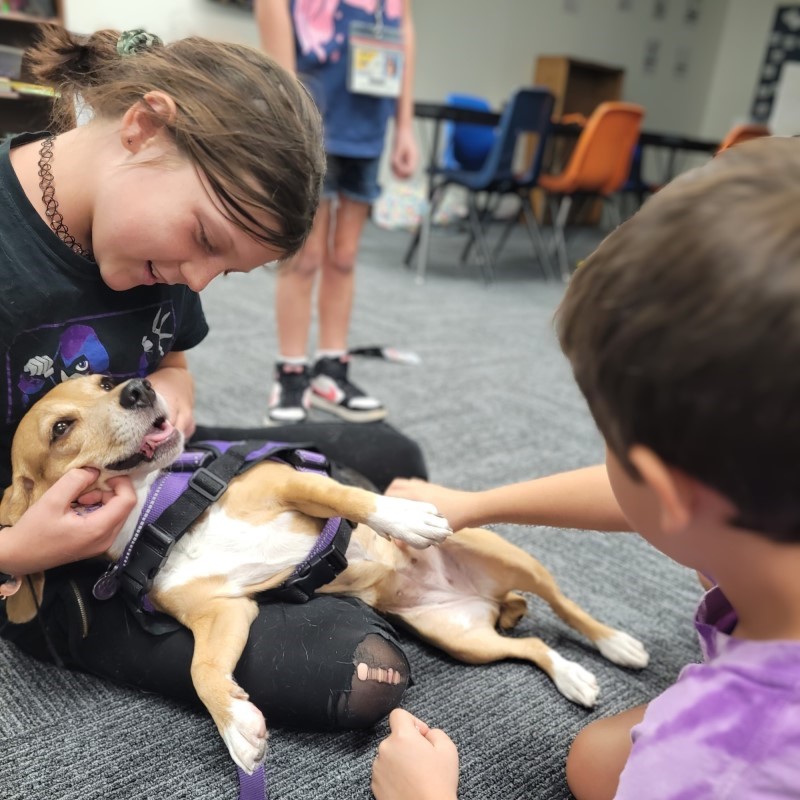 On top of already having a great temperament, the dogs you see in our pet therapy programs go through a lot of training and testing to earn their Therapy Dog Registration through nationally recognized certifiers. [Read related: What’s the Difference? Service Animals, Therapy Animals, and Emotional Support Animals.] Their handlers also train and test along with them, constantly watching and advocating for both the children and dogs during visits to make sure everyone is having a good time.
On top of already having a great temperament, the dogs you see in our pet therapy programs go through a lot of training and testing to earn their Therapy Dog Registration through nationally recognized certifiers. [Read related: What’s the Difference? Service Animals, Therapy Animals, and Emotional Support Animals.] Their handlers also train and test along with them, constantly watching and advocating for both the children and dogs during visits to make sure everyone is having a good time.
It’s important to remember that some of the things our Registered Therapy Dogs might not think twice about – like getting hugs – can be very uncomfortable or scary for other dogs! As an organization that provides pet therapy to children, we wanted to share a few quick tips to keep in mind when children are interacting with dogs:
Tip #1: Request permission
Instruct children to always request permission of an owner before petting a dog. All dogs (even Registered Therapy Dogs!) have preferred ways of being greeted and pet, and some dogs – no matter how cute! – are not safe to pet.
Tip #2: Supervision is Key
Always supervise interactions between dogs and children, even if it’s a family pet that’s known to be friendly. Being present allows you to intervene quickly if needed and potentially stop an accident before it even happens. Even friendly family dogs can have days where they are overwhelmed by stimuli in their environment, and some dogs become more easily overwhelmed as they age. An overwhelmed dog can become a stressed & defensive dog.
Tip #3: Proper Introductions
When introducing a new dog to a child, do it gradually and in a controlled environment. Allow the dog to approach at their own pace, and always supervise the interaction closely and be ready to intervene if either the dog or the child becomes uncomfortable.
Tip #4: Learn Dog Body Language
 Common signs of stress or discomfort in dogs, like growling, bared teeth, or tightly tucked tail are usually well-known, but there are also more subtle indicators such as walking away to avoid interaction, “whale eyes” (when they widen and show the whites of their eyes), stiffened body, and stress yawning. Teaching kids to recognize these signs can help them know when to give a dog space.
Common signs of stress or discomfort in dogs, like growling, bared teeth, or tightly tucked tail are usually well-known, but there are also more subtle indicators such as walking away to avoid interaction, “whale eyes” (when they widen and show the whites of their eyes), stiffened body, and stress yawning. Teaching kids to recognize these signs can help them know when to give a dog space.
Tip #5: Establish Boundaries
Teach children to respect a dog’s personal space and to understand that dogs, like people, need their own time and space. Encourage children to give dogs space when the dog retreats to their bed or designated areas, especially if the dog is showing signs of wanting to be left alone. This helps prevent situations where a dog might feel cornered or overwhelmed that could lead to potential defensive reactions.
Tip #6: Encourage Empathy and Gentle Interactions
Teach children to interact with dogs gently, avoiding rough play or sudden movements that might startle the dog. Encourage them to pet dogs calmly and not to climb on them or pull on their ears, tails, or fur.
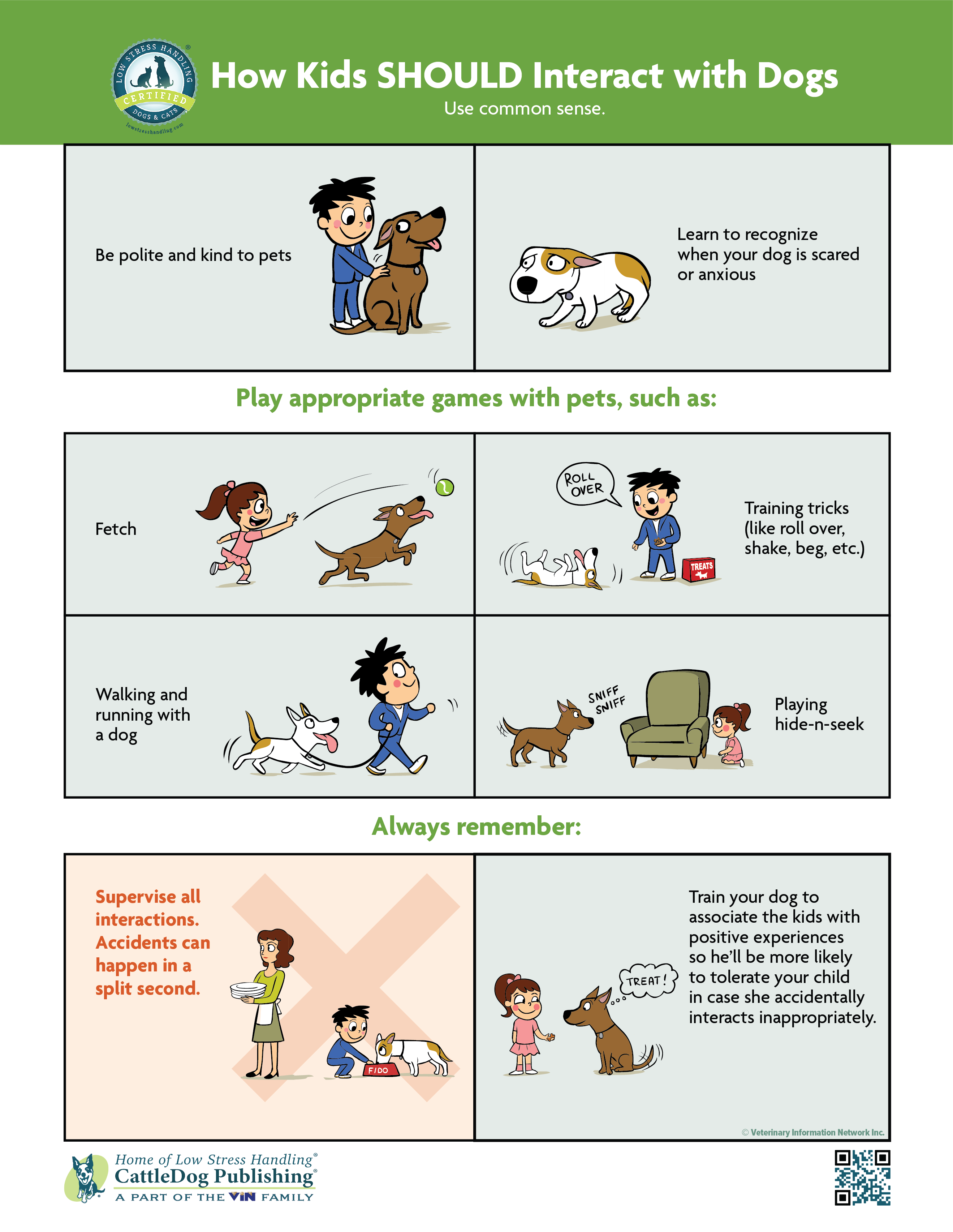
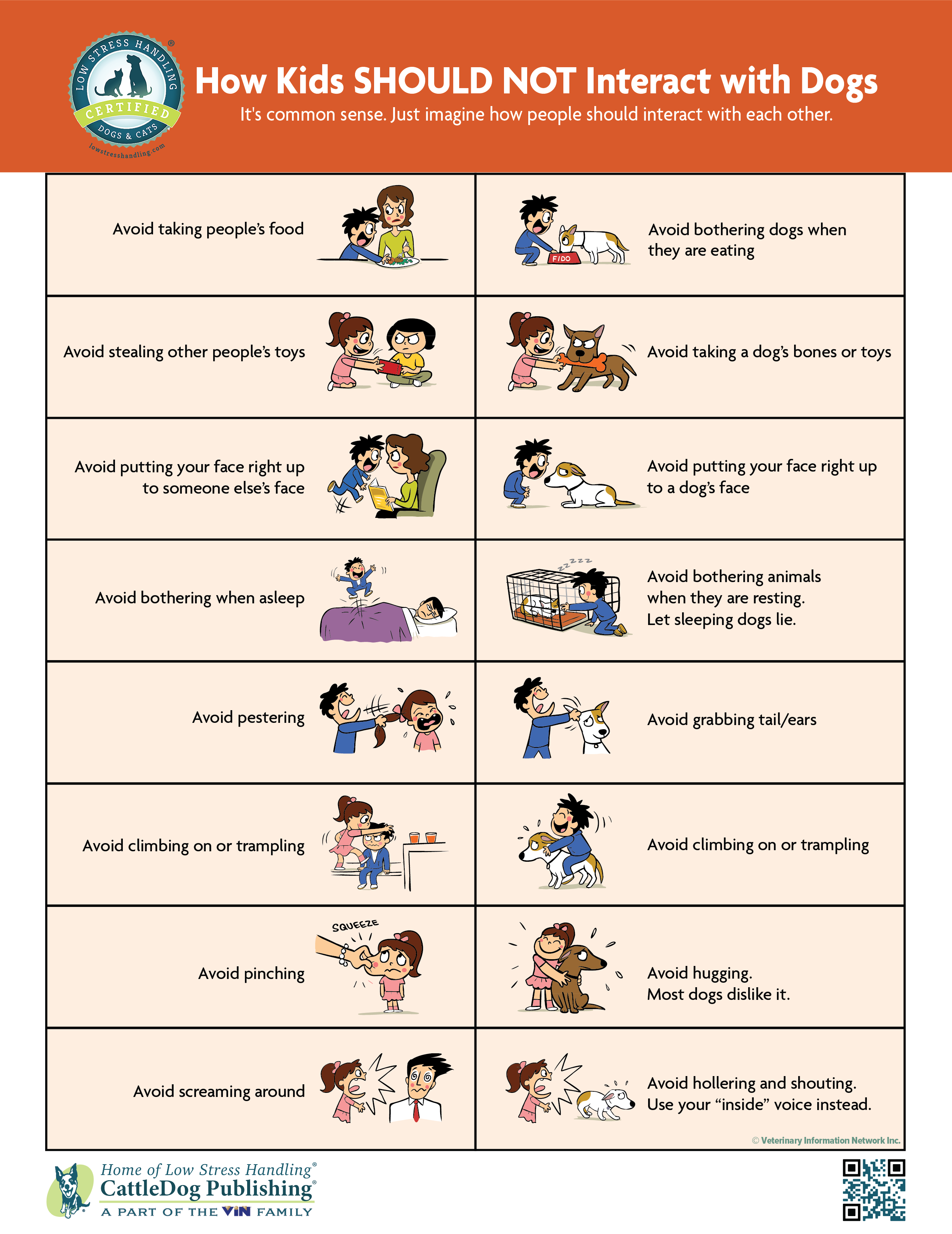
Whether a Therapy Dog at school or a family pet at home, not only do dogs provide unconditional love, but they also offer a unique way for children to learn important social and emotional skills like respect, empathy, and confidence. When we promote safe interactions between our kids and their furry friends, they benefit from the human-animal bond in positive ways that will remain with them for years to come!
As a pet therapy nonprofit, leading successful interactions between children and dogs is all in a day’s work for the Gabriel’s Angels pack. Browse through our website to learn more about how the human-animal bond can help the children in our community learn, grow, and heal.

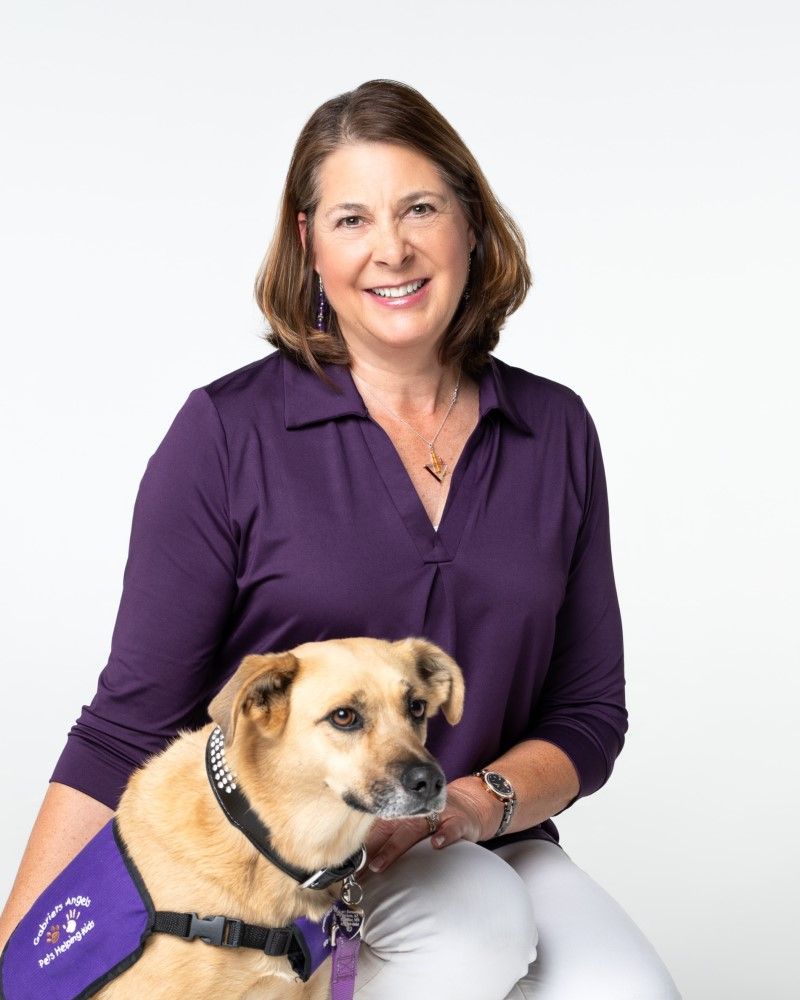
 We are grateful to partner with schools and other youth-serving organizations who appreciate the life-changing impact of pet therapy for the children in their care.
We are grateful to partner with schools and other youth-serving organizations who appreciate the life-changing impact of pet therapy for the children in their care. School Principal Shelly Richardson and staff surprised Kerry with the news by presenting her with flowers (and dog treats for Carmel!), and a letter inviting them to an awards ceremony to formally receive their recognition.
School Principal Shelly Richardson and staff surprised Kerry with the news by presenting her with flowers (and dog treats for Carmel!), and a letter inviting them to an awards ceremony to formally receive their recognition. At the CCUSD Awards Ceremony, the Superintendent read a wonderful write-up recognizing their dedication and the difference they’ve made in the lives of students and staff alike through their pet therapy work. Therapy Dog Carmel was the star of the show as she accompanied Kerry to the stage to accept their award.
At the CCUSD Awards Ceremony, the Superintendent read a wonderful write-up recognizing their dedication and the difference they’ve made in the lives of students and staff alike through their pet therapy work. Therapy Dog Carmel was the star of the show as she accompanied Kerry to the stage to accept their award.



